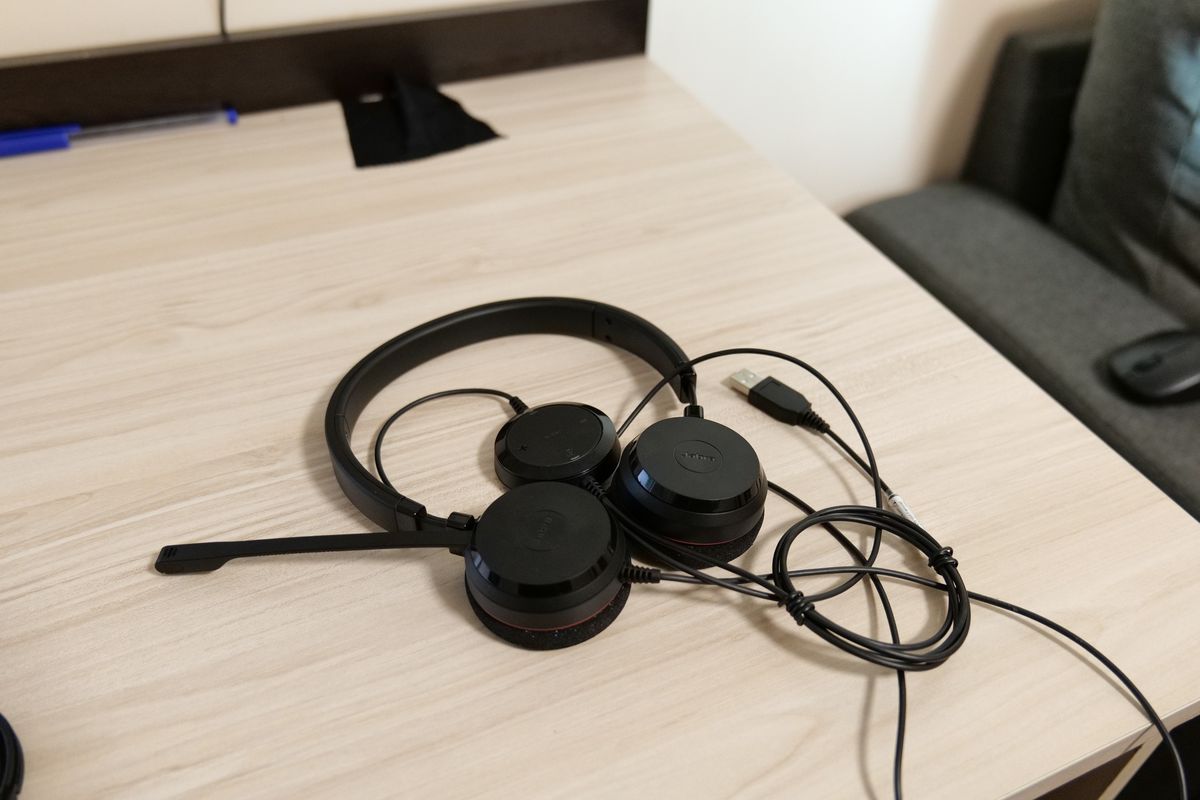Home>Production & Technology>Noise Cancellation>What Is Hybrid Active Noise Cancellation


Noise Cancellation
What Is Hybrid Active Noise Cancellation
Modified: January 22, 2024
Discover the power of hybrid active noise cancellation technology and how it can enhance your audio experience. Immerse yourself in pure sound, free from unwanted noise.
(Many of the links in this article redirect to a specific reviewed product. Your purchase of these products through affiliate links helps to generate commission for AudioLover.com, at no extra cost. Learn more)
Table of Contents
- Introduction
- Understanding Active Noise Cancellation
- Introducing Hybrid Active Noise Cancellation
- How Does Hybrid Active Noise Cancellation Work?
- Benefits of Hybrid Active Noise Cancellation
- Limitations of Hybrid Active Noise Cancellation
- Current Applications of Hybrid Active Noise Cancellation
- Future Developments in Hybrid Active Noise Cancellation
Introduction
Have you ever found yourself in a noisy environment, struggling to focus or relax? Whether it’s the constant hum of traffic, the chatter of a bustling cafe, or the drone of an airplane engine, unwanted noise can be a major distraction. Fortunately, technology has introduced a solution: active noise cancellation.
Active noise cancellation, or ANC, is a technology that uses advanced algorithms and microphones to reduce or eliminate ambient noise. By analyzing the incoming sound waves and producing an inverse sound wave, ANC can effectively cancel out the unwanted noise, allowing you to enjoy a peaceful and immersive experience.
While ANC has been a game-changer in the audio industry, there is a newer and more sophisticated version of this technology known as hybrid active noise cancellation. Hybrid ANC takes noise cancellation to the next level by combining multiple methods, resulting in even better noise reduction and audio performance.
In this article, we will delve into the world of hybrid active noise cancellation, exploring how it works, its benefits, and its limitations. We will also take a look at some of the current applications of this technology and what the future holds for hybrid ANC.
So, if you’ve ever wondered how noise cancellation can be improved or if you’re curious about the latest developments in this field, keep on reading to discover the world of hybrid active noise cancellation.
Understanding Active Noise Cancellation
Before diving into the details of hybrid active noise cancellation, let’s first understand the basics of active noise cancellation (ANC). ANC works by using microphones to capture the surrounding sounds and then generating sound waves that are 180 degrees out of phase with the unwanted noise. When these inverted sound waves combine with the original noise, they cancel each other out, resulting in a quieter environment.
Active noise cancellation relies on sophisticated algorithms and digital signal processing to analyze the incoming sound waves and create the inverse sound waves in real-time. The generated sound waves are then played through the headphones or speakers, effectively blocking out the unwanted noise.
This technology is particularly useful in noisy environments, such as airplanes, trains, or busy offices, where it can significantly enhance the audio experience by minimizing disruptions. Active noise cancellation can also provide benefits for those who work or study in noisy environments, as it helps improve focus and concentration.
It’s important to note that active noise cancellation is most effective for low-frequency noises, such as engine rumblings or background hums. It may have limitations in canceling out sudden or high-pitched sounds, as well as noises that are too close to the microphone. Nevertheless, ANC has revolutionized the way we perceive audio and has become a sought-after feature in headphones, earbuds, and other audio devices.
Now that we have a basic understanding of active noise cancellation, let’s explore the concept of hybrid active noise cancellation and how it takes noise reduction to the next level.
Introducing Hybrid Active Noise Cancellation
Hybrid active noise cancellation (H-ANC) is an advanced technology that combines multiple methods of noise reduction to deliver superior performance. Unlike traditional active noise cancellation, which relies solely on generating inverse sound waves, hybrid ANC incorporates additional techniques to further enhance noise reduction and audio quality.
One of the key components of hybrid ANC is the use of passive noise isolation. While active noise cancellation focuses on generating anti-noise to counteract external sound waves, passive noise isolation works by physically blocking out the noise using materials like foam or silicone ear tips. The combination of active and passive noise reduction creates a more robust barrier against unwanted sounds, providing a more immersive and peaceful audio experience.
In addition, hybrid ANC often incorporates adaptive noise cancellation, which dynamically adjusts the noise cancellation settings based on the environment and the user’s preferences. By continuously monitoring the sound environment, adaptive ANC can automatically optimize the noise cancellation levels, ensuring optimal performance in different scenarios.
Another element of hybrid ANC is the utilization of multiple microphones. While traditional ANC systems typically employ one or two microphones, hybrid ANC systems may integrate three or more. This allows for more accurate sound capture and analysis, leading to more precise noise cancellation. The additional microphones can also help improve the overall audio quality, enhancing the clarity of voice calls and music playback.
The combination of active noise cancellation, passive noise isolation, adaptive noise cancellation, and multiple microphones results in a comprehensive noise reduction solution that can effectively minimize both steady-state and transient noises. This makes hybrid ANC particularly suited for environments with complex and varied soundscapes, such as busy city streets, crowded spaces, or even during travel.
With its ability to provide a versatile and adaptable noise reduction solution, hybrid active noise cancellation has gained popularity among audio enthusiasts and travelers alike. The technology has become a sought-after feature in premium headphones and earbuds, offering users a more immersive and uninterrupted audio experience.
Now that we understand the concept of hybrid active noise cancellation, let’s explore how this technology works in practice.
How Does Hybrid Active Noise Cancellation Work?
Hybrid active noise cancellation (H-ANC) combines multiple techniques to effectively reduce or eliminate unwanted noise. Let’s take a closer look at how this technology works:
1. Active Noise Cancellation (ANC): Hybrid ANC utilizes active noise cancellation as the foundation of its noise reduction capabilities. This involves using microphones to capture the ambient sound and analyzing the frequency and amplitude of the noise. The ANC system then generates anti-noise sound waves that are exactly opposite in phase to the incoming noise. When played back through the speakers or headphones, these inverse waves cancel out the original noise, resulting in a significant reduction in overall background sounds.
2. Passive Noise Isolation: In addition to active noise cancellation, hybrid ANC incorporates passive noise isolation. This method involves using physical barriers, such as specially designed ear cups or ear tips, to block external noise from entering the ear. By creating a tighter seal, passive noise isolation helps prevent noise leakage and further enhances the effectiveness of noise reduction.
3. Adaptive Noise Cancellation: Hybrid ANC systems often feature adaptive noise cancellation, which adjusts the level of noise reduction based on real-time environmental conditions. Using advanced sensors and algorithms, the technology continuously monitors the surrounding sound and automatically adjusts the ANC settings to optimize the listening experience. This ensures that the appropriate level of noise cancellation is applied in different scenarios, providing a tailored and personalized noise reduction experience.
4. Multiple Microphones: Hybrid ANC devices typically incorporate multiple microphones strategically placed to capture and analyze sound from various directions. These microphones work together to accurately detect and analyze the incoming noise, enabling the ANC system to generate precise anti-noise sound waves. The multiple microphones also help improve voice call quality and provide a more immersive audio experience.
By combining these techniques, hybrid active noise cancellation offers a comprehensive and effective solution for reducing unwanted noise. The technology is designed to provide a customizable and immersive listening experience, allowing users to enjoy their favorite music or audio content without the disruption of external noise.
It’s important to note that the effectiveness of hybrid ANC can vary based on factors such as the quality of the device, the fit of the ear tips or headphones, and the characteristics of the surrounding environment. However, when properly implemented, hybrid ANC can significantly enhance the overall audio experience and provide a quieter and more focused listening environment.
Now that we have explored how hybrid active noise cancellation works, let’s dive into the benefits it offers.
Benefits of Hybrid Active Noise Cancellation
Hybrid active noise cancellation (H-ANC) offers several compelling benefits that make it a sought-after feature in audio devices. Let’s explore some of the key advantages of using hybrid ANC:
- Noise Reduction: The primary benefit of hybrid ANC is its ability to effectively reduce or eliminate unwanted noise. By combining active noise cancellation with passive noise isolation and adaptive noise cancellation, hybrid ANC provides a multi-layered approach to noise reduction. This allows users to enjoy their audio content with minimal distractions, whether they are in a noisy office, a crowded airport, or a busy city street.
- Improved Audio Quality: Hybrid ANC not only reduces external noise but also enhances the overall audio quality. By minimizing background distractions, users can fully immerse themselves in the sound experience, picking up subtle details and nuances that may have been previously obscured. This is particularly beneficial for music enthusiasts, as it allows them to enjoy their favorite songs with greater clarity and depth.
- Enhanced Focus and Concentration: The ability to block out external noise is especially valuable in environments where focus and concentration are essential. Whether you’re studying for an important exam, working on a complex project, or simply trying to clear your mind, hybrid ANC creates a quieter and more conducive environment for improved productivity and mental clarity.
- Health Benefits: Exposure to constant noise can have negative effects on our health and well-being. It can contribute to stress, fatigue, and even hearing damage. Hybrid ANC helps mitigate these risks by reducing the need to increase the volume of audio devices to overcome background noise. By enjoying audio content at lower volumes, users can protect their hearing and reduce the potential long-term health consequences associated with excessive noise exposure.
- Travel Companion: Hybrid ANC is particularly beneficial for travelers who face various noise challenges during their journeys. It can effectively cancel out the engine noise on airplanes, the rumble of trains, or the hustle and bustle of airports, making the travel experience more enjoyable and relaxing. Hybrid ANC also comes in handy during long-haul flights, allowing users to listen to their favorite music or watch movies without being disturbed by the ambient noise.
These are just a few of the many benefits of hybrid active noise cancellation. While the specific advantages may vary depending on the device and implementation, the overall impact is clear – hybrid ANC offers a significant enhancement to the audio experience, creating a more immersive, focused, and enjoyable listening environment.
Now, let’s explore the limitations of hybrid active noise cancellation to provide a balanced perspective on the technology.
Limitations of Hybrid Active Noise Cancellation
While hybrid active noise cancellation (H-ANC) offers numerous benefits, it’s important to be aware of its limitations as well. Here are some of the potential drawbacks to consider:
- Effectiveness in Certain Frequencies: Hybrid ANC systems excel at reducing low-frequency noises, such as engine rumbles or background hums. However, they may have limitations in canceling out sudden or high-pitched sounds. These types of noises can be challenging to fully eliminate since they require faster processing and may exceed the capabilities of the ANC algorithms.
- Sound Leakage: Although hybrid ANC devices aim to block out external noise, there may still be some sound leakage, especially at higher volumes. This can be a concern for those seeking complete isolation from their surroundings, particularly in environments requiring utmost privacy or concentration.
- Reliance on Batteries: Most hybrid ANC devices require batteries or power sources to operate. This means that the effectiveness of noise cancellation is dependent on the battery life of the device. If the battery dies or is not charged, the ANC functionality may be disabled, returning the device to a standard audio playback mode.
- Variability in Performance: The effectiveness of hybrid ANC can vary across different devices and models. Factors such as the quality of microphones, processing algorithms, and fitment of earphones or headphones can impact the overall performance. It’s important to select a device that is well-reviewed and suits your specific requirements.
- Cost: Hybrid ANC technology is often found in premium audio devices, which can come with a higher price tag compared to non-ANC alternatives. While the benefits of hybrid ANC may justify the cost for some users, it’s important to consider budget constraints when making a purchase decision.
Despite these limitations, hybrid active noise cancellation remains an incredibly effective and sought-after technology for noise reduction. It offers a substantial improvement in audio quality, focus, and overall listening experience in various environments.
Now that we’ve explored the limitations of hybrid ANC, let’s move on to the current applications of this technology.
Current Applications of Hybrid Active Noise Cancellation
Hybrid active noise cancellation (H-ANC) technology has found its way into a wide range of audio devices and applications. Let’s explore some of the current applications where hybrid ANC is making a significant impact:
- Headphones and Earbuds: One of the most prevalent applications of hybrid ANC is in headphones and earbuds. Many high-end models now incorporate this technology to provide users with a premium audio experience. Whether for music enthusiasts, frequent travelers, or professionals seeking a quiet and focused workspace, hybrid ANC-powered headphones and earbuds offer an immersive and uninterrupted listening experience.
- Hearing Aids: Hybrid ANC is also being utilized in hearing aids to help individuals with hearing loss. By reducing background noise and enhancing speech clarity, hybrid ANC technology can greatly improve the listening experience and overall quality of life for those with hearing impairments.
- Smartphones and Tablets: Some smartphones and tablets now incorporate hybrid ANC technology to enhance the audio experience during phone calls and media playback. The noise reduction capabilities of hybrid ANC can help users hear clearly during phone conversations and enjoy their media content without external interferences.
- Office Environments: Hybrid ANC solutions are becoming increasingly popular in office environments where concentration and productivity are crucial. Devices such as ANC-enabled desk phones, speakerphones, and conference systems can help reduce background noise and improve the clarity of voice communication in open office spaces or noisy meeting rooms.
- Aircraft Interiors: Hybrid ANC is being employed in the aircraft industry to enhance passenger comfort. By reducing the noise generated by engines, airflow, and other sources, hybrid ANC can create a quieter and more enjoyable cabin environment, allowing passengers to relax, sleep, or engage in inflight entertainment without distraction.
These are just a few examples of the current applications where hybrid ANC is being utilized. As technology advances and the demand for noise reduction grows, we can expect to see hybrid ANC integrated into more devices and industries in the future.
Now, let’s take a look at the future developments and trends in hybrid active noise cancellation technology.
Future Developments in Hybrid Active Noise Cancellation
As hybrid active noise cancellation (H-ANC) continues to evolve, there are several exciting developments and trends on the horizon. Here are some areas to watch for future advancements:
- Improved Noise Reduction Algorithms: The algorithms used in H-ANC systems will likely continue to be refined and optimized for better noise cancellation performance. Advanced machine learning and artificial intelligence techniques can be employed to analyze and process complex audio signals, enabling more accurate and efficient noise reduction.
- Customizable Noise Cancellation Profiles: Manufacturers may offer users the ability to customize their noise cancellation profiles based on their preferences and specific noise environments. This personalized approach would allow individuals to tailor the level and type of noise cancellation to their liking, further enhancing the user experience and comfort.
- Integration with Virtual Assistants: As virtual assistants such as Siri, Google Assistant, and Alexa become more prevalent, we can expect to see integration between H-ANC devices and these assistants. This would enable users to control their noise cancellation settings hands-free, providing a seamless and convenient user experience.
- Enhanced Voice Quality: Manufacturers will likely focus on improving the accuracy and clarity of voice calls during ANC. By incorporating advanced noise suppression algorithms and beamforming techniques, H-ANC devices can better isolate the user’s voice from background noise, resulting in clearer and more intelligible conversations.
- Miniaturization and Integration: With advancements in microelectronics and miniaturization techniques, we can expect H-ANC technology to become even more compact and integrated. This could lead to seamless integration of ANC capabilities into a wide range of devices, from smartwatches and fitness trackers to smart home assistants.
These are just a few potential developments in the field of hybrid active noise cancellation. As technology continues to advance, we can anticipate even more innovative solutions that deliver superior noise reduction and an enhanced audio experience.
It’s clear that hybrid ANC has the potential to shape the way we experience audio and interact with our devices in the future. As researchers and engineers continue to push the boundaries of this technology, we can look forward to a future where unwanted noise becomes a distant memory.
Now, let’s summarize what we’ve learned about hybrid active noise cancellation.











